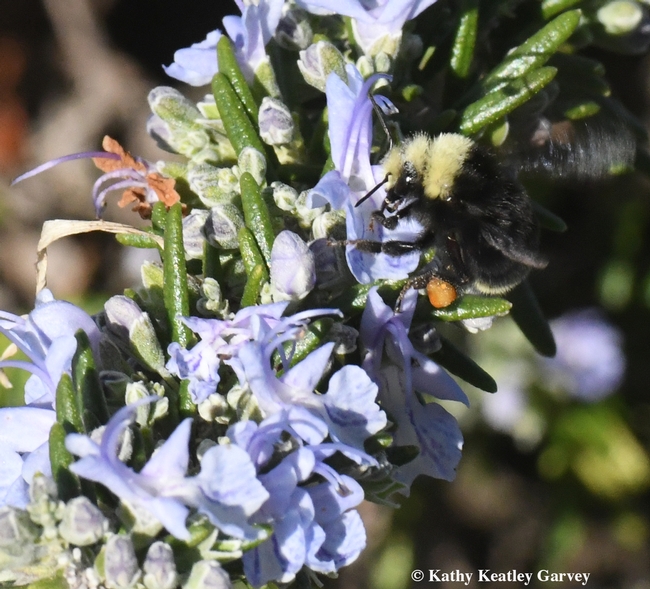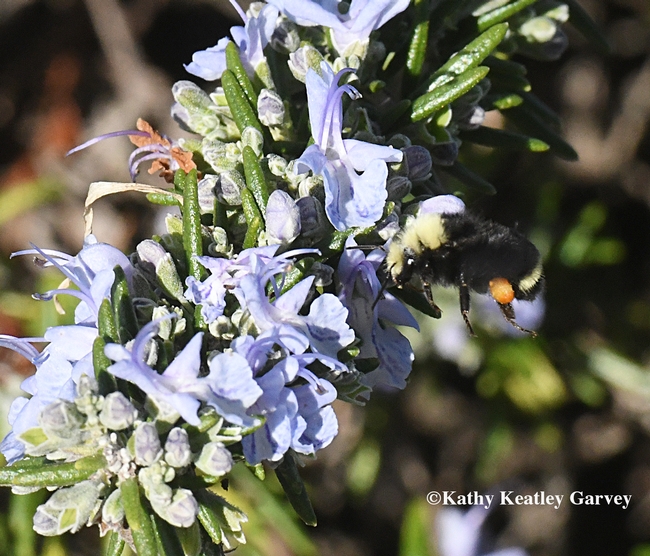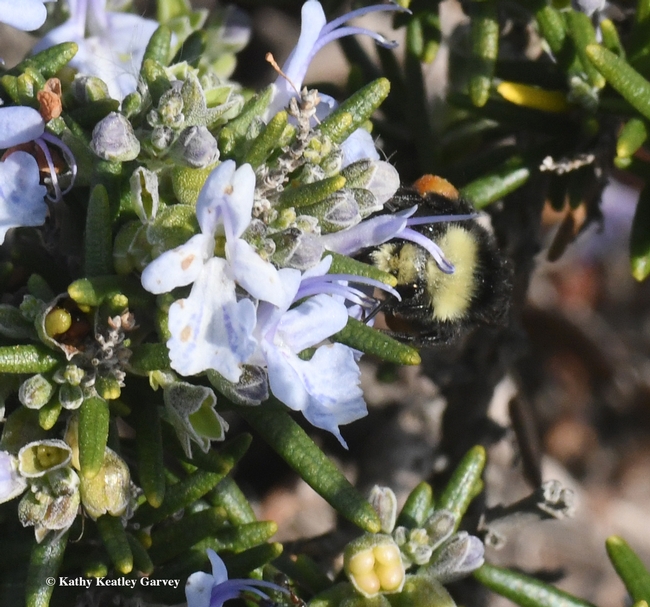Bring on the bumble bees!
In yesterday's Bug Squad blog, we mentioned the unusual first-of-the-year bumble bee sightings at the Benicia Capitol State Historic Park. We captured images of the yellow-faced bumble bees, Bombus vosnesenskii, nectaring on jade, Crassula ovata, the morning of Jan. 1, 2018. They were packing cream-colored pollen.
Bombus vosnesenskii were also out and about at the Benicia Marina--same morning, same day--but on a different floral species: rosemary, Rosmarinus officinalis. This flower, too, yields a cream-colored pollen.
But wait! The bumble bees we saw foraging on the rosemary were packing orange pollen, as bright as Halloween pumpkins.
What happened? They didn't get it from the rosemary. It came from another plant, perhaps the early blooming California golden poppies which yield orange pollen (and no nectar).
Rosemary, which blooms nearly year-around in this area, belongs to the mint family, Lamiaceae, which also includes peppermint, spearmint, basil, lavender, marjoram, germander, thyme, savory, and horehound. One of the distinguishing features in this family: square stems.
When you think about it, rosemary's presence at the marina is quite appropriate. It derives its name from the Latin "dew" (ros) and "sea" (marinus), or "dew of the sea."
Attached Images:

A yellow-faced bumble bees, Bombus vosnesenskii, nectaring on rosemary at the Benicia Marina on New Year's Day, 2018. Note the orange pollen, derived from another floral species, probably California golden poppies. (Photo by Kathy Keatley Garvey)

The yellow-faced bumble bee, Bombus vosnesenskii, heads for another rosemary blossom at the Benicia Marina. (Photo by Kathy Keatley Garvey)

Peek-a-bee! The foraging bumble bee, Bombus vosnesenskii, displays a little of its orange pollen. (Photo by Kathy Keatley Garvey)